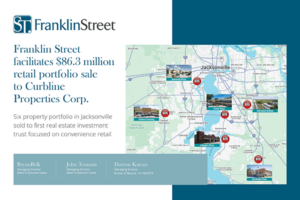MIAMI—It’s almost mind-boggling. US losses from flood damage to commercial real estate properties are likely to average over $1 billion a year by 2050—and multifamily owners in low-lying coastal areas could together face average annual losses over $190 million.
That’s according to a new report from CBRE. Making matters worse, market disruption after extreme flooding is likely to cause commercial real estate owners hundreds of millions of dollars more every year.
“American cities are among the most vulnerable in the world to flood loss because, as a wealthy nation, the US has a high overall value of assets in low-lying coastal areas, but we have minimal protective measures in place relative to other wealthy nations in Europe and Asia,” says Quinn Eddins, director of research and analysis a CBRE. “One of the things this study makes evident is that as costly as it may be to build up our flood defense infrastructure, inaction will be far more costly. We also need to rethink land-use policies and building practices that encourage development in high-risk coastal areas.”
The report, “Rising Vulnerability to Floods Risks Devastating Property Losses in U.S. Cities,” Eddins, draws on a 2013 article in the journal Nature Climate Change authored by Stephane Hallegatte of the World Bank, along with data from the National Flood Insurance Program (NFIP), to develop a clearer picture of how the CRE market in particular will be affected by flooding in coastal cities as a result of population growth, coastal development, climate change and human-induced subsidence. Using New Orleans as a case study, the report illustrates the long-term “market disruption” effect of a major flooding event on one city’s multifamily market.
“It was years before average apartment rents and revenue recovered to pre-Katrina levels, with apartment owners incurring approximately $234 million in rent losses collectively between 2005 and 2011 as a result of market disruption,” said Mr. Eddins.
Commercial real estate owners can take a number of steps to reduce their exposure to future flood losses including taking flood exposure and losses into account when allocating funds across markets and evaluating potential investments in high-risk areas. Some options are installing emergency generators and sump pumps; purchasing supplemental flood insurance coverage; and bearing increasing future flood losses in mind when developing in high-risk areas.
“Owners should take no chances,” Greg Matus, regional managing partner of Franklin Street in South Florida, tells GlobeSt.com. “We had clients buying properties the week that Erika may have arrive and we suggested to them that they should bind their policies early. The rule that many private companies follow—is that once a hurricane declared in in a region, they will not bind policies, add riders or other coverage, or issue a renewal if there has been a lapse in coverage. So, if you’re in the process of closing on a commercial property, lock in your insurance now so you can ensure coverage.”
Want to know more about this topic. Check out my recent interview with Ryan Cassidy, senior director of Franklin Street in South Florida.



